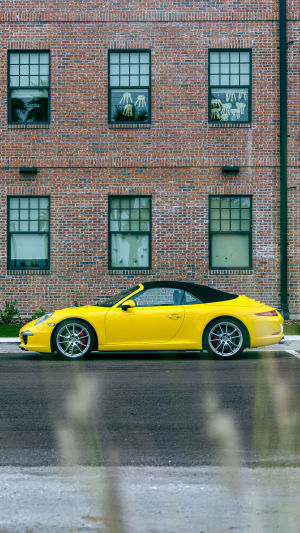As the automotive industry has progressed, an intriguing trend has emerged - the prevalence of streamlined car designs.
These modern vehicles often boast a sleek appearance, featuring downward-sloping hoods, high-curved cabins, forward-sloping front windshields, and smooth, flowing curves.
But have cars always been this way? What is the rationale behind this design evolution?
Tracing back to the origins of automobiles, it can be easily found that early cars resembled more of a mechanical carriage than the streamlined appearance today.
These early models had engines placed atop the carriages, but they lacked the graceful lines and aesthetic appeal associated with contemporary designs.
The turning point came in the early 20th century when a connection between shape and speed was discovered. The Germans were pioneers in this area, inventing the "teardrop" automobile and the streamlined airplane.
However, these innovative designs failed to gain widespread popularity at the time.
It was not until the 1930s, in the United States, that streamlined car design took center stage. The nation was just recovering from the tumultuous era of the Great Depression, and a newfound confidence in automobile design emerged.
Seeking to inject fresh elements into their creations, American designers found the perfect balance of speed and aesthetics in streamlined car designs.
The captivating appearance of these vehicles, reminiscent of the future, offered a glimmer of hope and optimism during trying times.
The allure of streamlined cars stems from their soft and fluid lines, which captivate the human eye. Beyond their aesthetic appeal, the design serves a vital purpose: reducing wind resistance and increasing speed.
By adopting a streamlined shape, cars effectively minimize the windward area, enabling swifter movement and, in turn, reducing overall energy consumption.
Moreover, streamlined cars optimize downforce, a critical aspect, particularly during high-speed driving.
By controlling the airflow around the vehicle, the design creates a proper balance of downforce, enhancing adhesion to the ground and mitigating the risk of skidding. This ensures a secure and stable experience for drivers and passengers alike.
The seamless combination of form and function in streamlined car designs has revolutionized the automotive industry, making it a foundation for various car models across different segments.
Whether in sports cars, sedans, or even SUVs, the principles of streamlining continue to be embraced for their tangible benefits.
However, it is essential to acknowledge that not all vehicles adhere to this trend. Some iconic muscle cars and heavyweight automobiles maintain their unique and distinct shapes, standing apart from the streamlined norm. Nevertheless, these models exemplify diversity and the freedom to explore different design philosophies.
The evolution of streamlined car design has blended aesthetics with speed, leaving an indelible mark on the automotive landscape.





